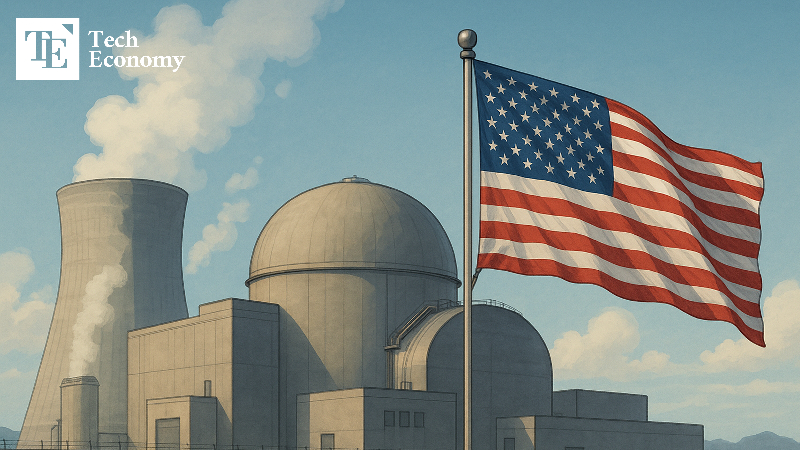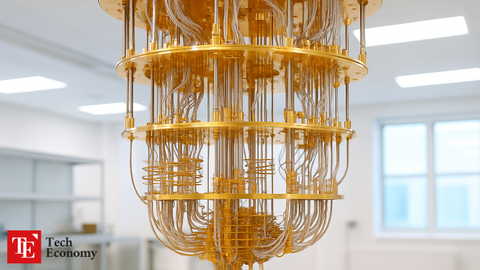U.S. Signals Nuclear Revival, Speeds Up Commercialization of SMRs and Microreactors
Input
Modified
Declares End to Nuclear Phase-Out as a National Strategy
SMRs Emerge as a Solution to Power Shortages
Accelerates Development of Next-Generation Microreactors

The United States is accelerating its overhaul of the next-generation nuclear power market by easing regulations and expanding private investment. The Trump administration has moved to streamline licensing procedures to encourage private-sector participation, while major Big Tech companies—seeking solutions to mounting power shortages—are committing not only to long-term purchase agreements but also to direct investments, signaling their official entry into the market. At the same time, development of next-generation reactors is advancing, with an eye toward building power supply networks optimized for specialized environments such as military operations, space missions, and industrial sites.
Advanced Reactor Projects Move Forward
According to Barron’s on August 13, the U.S. Department of Energy (DOE) recently selected 11 advanced reactor projects for its small reactor demonstration program. Part of an executive order signed in May by President Donald Trump on “DOE Reactor Testing Reform,” the initiative aims to construct and operate at least three test reactors by July 2026 and achieve criticality.
When signing the executive order, Trump declared his goal of increasing the nation’s nuclear generating capacity to 400 gigawatts by 2050. This aligns with his emphasis—since winning the election in November—on reviving the nuclear industry alongside fossil fuels, as a means of lowering energy costs to curb inflation and rebuild manufacturing. The administration views nuclear power as an energy source that can be deployed in a wide range of capacities virtually anywhere.
Companies selected for the program include Aalo Atomics Inc., Antares Nuclear Inc., Atomic Alchemy Inc., Deep Fission Inc., Last Energy Inc., Natura Resources LLC, Oklo Inc., Radiant Industries Inc., Terrestrial Energy Inc., and Valar Atomics Inc., with Oklo overseeing two separate projects.
These companies will develop a range of reactor technologies. Aalo Atomics is working on a 10 MW sodium-cooled microreactor, while Antares Nuclear is building a 500 kW sodium heat-pipe–cooled reactor. Atomic Alchemy is developing a 15 MWt light-water reactor. Although the costs of design, manufacturing, construction, operation, and decommissioning will be borne entirely by the companies, DOE approval under the Atomic Energy Act is expected to give them an edge in securing commercial licenses and private financing.
DOE Deputy Secretary James Danly described the president’s demonstration program as a “call to action,” noting that all participating companies are aiming to achieve safe criticality by Independence Day, and that the government will do everything possible to support their efforts. Jacob DeWitte, co-founder and CEO of Oklo, added that DOE is “leveraging its unique capabilities to enable America’s nuclear innovators to build,” calling it a milestone that will usher in a new era of nuclear construction.

Surge in New SMR Projects Expected
Industry interest is also converging on nuclear infrastructure expansion. The rapid growth of artificial intelligence, driven by Big Tech, is driving a surge in data center power demand, making round-the-clock stable power an essential requirement. The four largest U.S. tech companies—Meta, Google, Amazon, and Microsoft—have set a goal of securing 14 GW of nuclear power by 2040. Analysts say this combination of private-sector demand and political momentum from the Trump administration is solidifying a return to nuclear power.
This trend has already materialized in long-term power purchase agreements (PPAs). In June, Meta signed a 20-year PPA with utility Constellation to take all the output from the Illinois Clean Energy Center starting in June 2027. The deal provided the basis for extending operations at a plant that had been slated for closure that year. Constellation is also working to restart Three Mile Island Unit 1 in Pennsylvania, with output slated for Microsoft data centers.
Direct investment in small modular reactors (SMRs) is also gathering pace. Amazon announced plans to invest $700 million in U.S. SMR developer X-energy, with the goal of deploying more than 5 GW of SMR capacity by 2039. Its first project, in partnership with Energy Northwest in Washington state, calls for four 320 MW SMRs. Google has signed the world’s first long-term SMR power purchase agreement with Kairos Power, targeting the start of its first commercial reactor in 2030 and securing up to 500 MW by 2035.
As a result, new construction—delayed for decades after the 1979 Three Mile Island accident and the 2011 Fukushima disaster—is entering a restart phase. Government policy is easing regulatory bottlenecks, while companies are clarifying early revenue prospects through long-term PPAs and direct investments. The U.S. energy market is thus pursuing a dual-track strategy of extending existing nuclear generation contracts while ramping up new SMR construction.
Tailored Energy Solutions Emerge
In parallel, the U.S. nuclear sector is moving ahead with next-generation microreactors, which are even smaller than SMRs. While SMRs have outputs of up to 300 MW, microreactors generate no more than 20 MW. Compared to large-scale nuclear plants, they produce less than 1% of the output, but offer the advantages of simpler systems and minimal staffing requirements. They are also considered inherently safer, as their design causes output to drop when reactor components expand due to overheating.
Another hallmark is modular construction—building units in factories and transporting them for on-site installation. Their small footprint and construction timelines of just a few months make them well-suited to extreme environments or remote locations where building a power grid is difficult. Recent R&D projects have proposed designs capable of operating reliably in deserts, polar regions, high-altitude areas, and even on offshore floating platforms.
Industry analysts believe microreactors could not only fill and expand niche demand within the SMR market but also strengthen America’s technological lead in next-generation reactors. If their potential for cutting initial construction and operating costs is proven, they could contribute to carbon neutrality through hybrid deployment with renewable energy. With multiple demonstration projects underway involving both private companies and national research institutions, the United States is poised to further consolidate its leadership in the global market for next-generation nuclear technology.





















